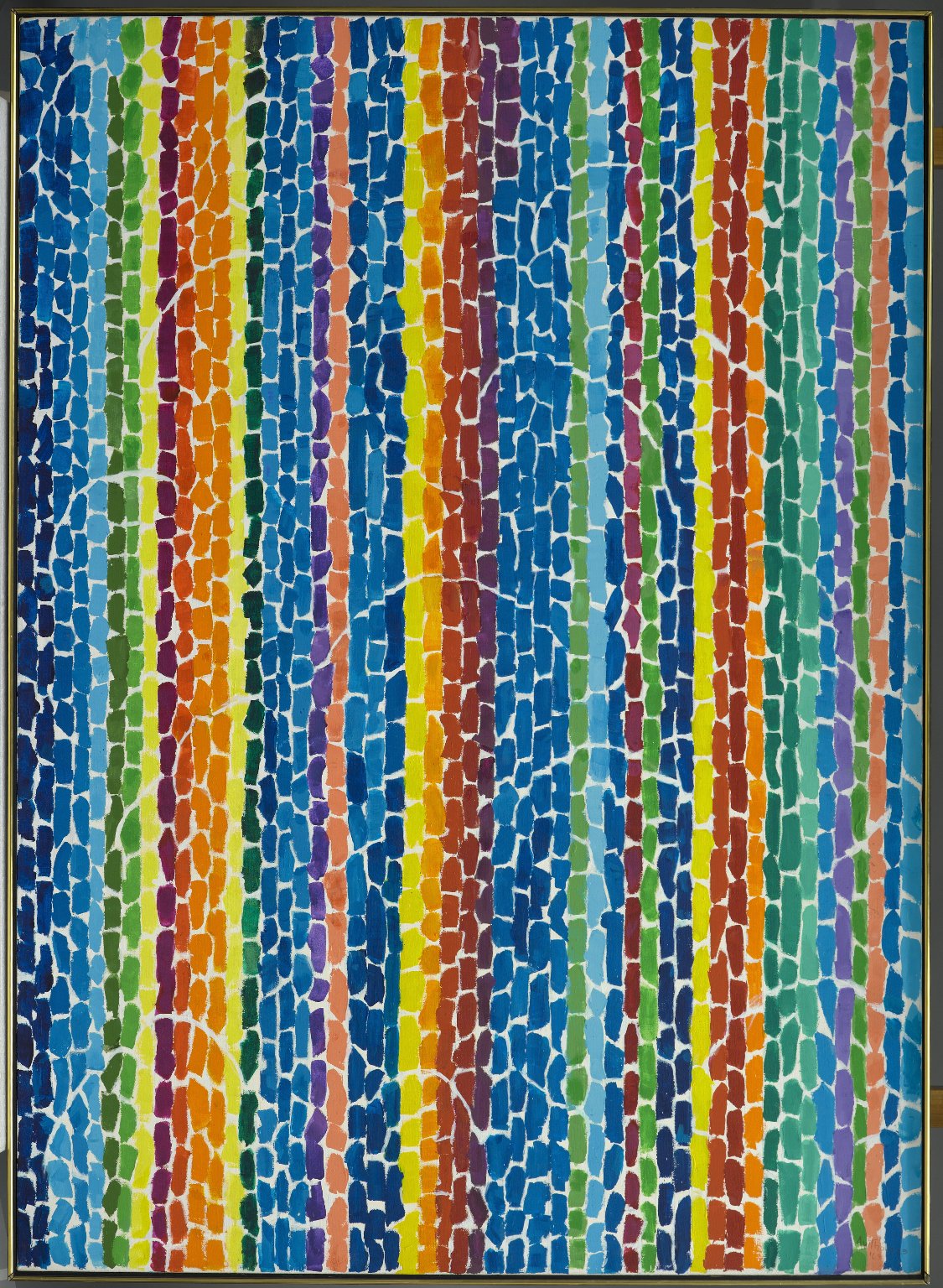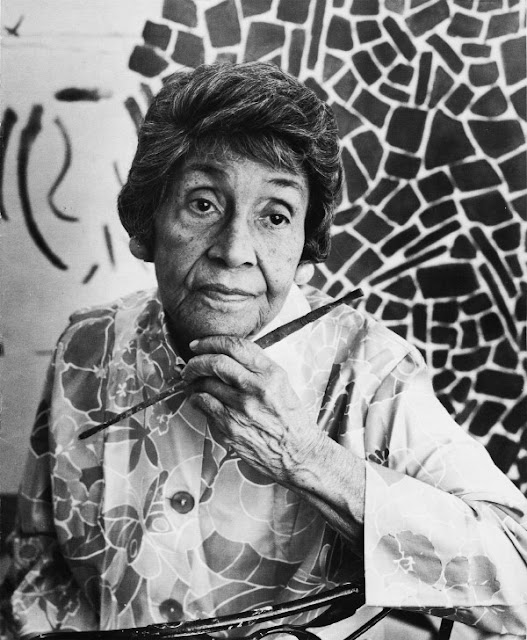I first became acquainted with the work of Alma Thomas when I was visiting
the National Museum of Women in Art in Washington, D.C. I came around a
corner, and there, standing 7 feet high, was this glorious picture in brilliant
color, looking like my backyard on a bright sunny day in April.
It is entitled "Iris, Tulips, Jonquils, and Crocus."
Alma Thomas lived from 1891-1978 and died at 86.
"Breeze Rustling the Leaves in Autumn"
Ms Thomas was born in Georgia on Sept. 22, 1891, but spent most of her life in
Washington, D.C. She first graduated from a teaching training school and taught
kindergarten, then went to Howard University and got a degree in art. She began
teaching art in the middle school. She received a master's degree
from Columbia University.
"Deep Red Roses Chant."
After teaching middle school for 36 years, she retired in 1960. She decided to devote
herself full-time to creating art and became one of the leading Color Field Painters of
Washington and was friends with the other leading artists, like Morris Louis and
Kenneth Noland.
"Flowers, Jefferson Memorial"
Thomas developed a unique style influenced by the color and simplified forms
of Henri Matisse, the pointillism of Seurat, and the tesserae of Byzantine mosaics.
It was her own special vision. Most of her paintings are large, 5 to 7 feet high,
like the large paintings being created by Jackson Pollock and the Abstract
Expressionists in New York.
"Grassy Melodic Chant." 1976
Instead of slashing and dripping paint, as some of her contemporaries did,
Thomas used small rectangles of color to create her abstract forms.
She created "painted mosaics." She used both oils and acrylics.
"Hydrangea Spring Song." 1976
Thomas liked to go to the arboretum in Washington, D.C. to enjoy
the flowers and color. Or she would drive out into the countryside
beyond the city to absorb the colors of nature.
"Air View of a Spring Nursery."
She frequently visited plant nurseries where the colors of flowers were
particularly strong and bright.
"Pink Crepe Myrtle"
Washington is particularly and justly famous for its myriad blossoming trees in the
spring. The crepe myrtles are especially numerous and colorful.
"Red Scarlet Sage"
A friend introduced her to a gallery owner from New York City,
and she began to show her works in New York. The Whitney Museum
of American Art gave her her first one-woman show, the first time
an African American woman had ever had a solo show at the Whitney.
"Arboretum White Dogwood."
The Washington area is filled with dogwood trees which bloom
prolifically in spring. White dogwoods create clouds all over the city.
"Aquatic Garden"
There were also ponds with water lilies and aquatic plants.
"Wind Dancing with Spring Flowers"
Her work became very popular and the Smithsonian and the Museum of Modern Art
came looking for works. The National Museum of American Art in
Washington showed her work.
"Wind and Crepe Myrtle"
Crepe Myrtle trees come in white, pink, and magenta.
"White Daisies Rhapsody."
A garden full of white daisies on their very slender stems bend and sway with the wind.

"Wind, Sunshine, and Flowers"
"Pink Dogwood and Azaleas"
The Washington Arboretum is world famous for its collection of azaleas,
and when they bloom in the spring, every color in the rainbow seems to be
brilliantly represented.
"Lake Reflecting Advent of Spring"
"Autumn Leaves Fluttering in the Wind"
Thomas became very interested in American space exploration and the photos taken
from outer space. She made a number of paintings based on this theme.
"Splashdown of Apollo 12"
"Splashdown of Apollo 13."
"Astronauts see Dawn Arising"
"A Glimpse of Mars"
"The Eclipse"
"Elysian Fields." This painting is about 7 feet wide/
Alma Thomas
"Rainbow" was painted in 1978, the year she died.
"Resurrection" is owned by the Hirshhorn Museum, but was on loan and hung prominently
in the White House under Barack and Michele Obama.
_
_


























No comments:
Post a Comment